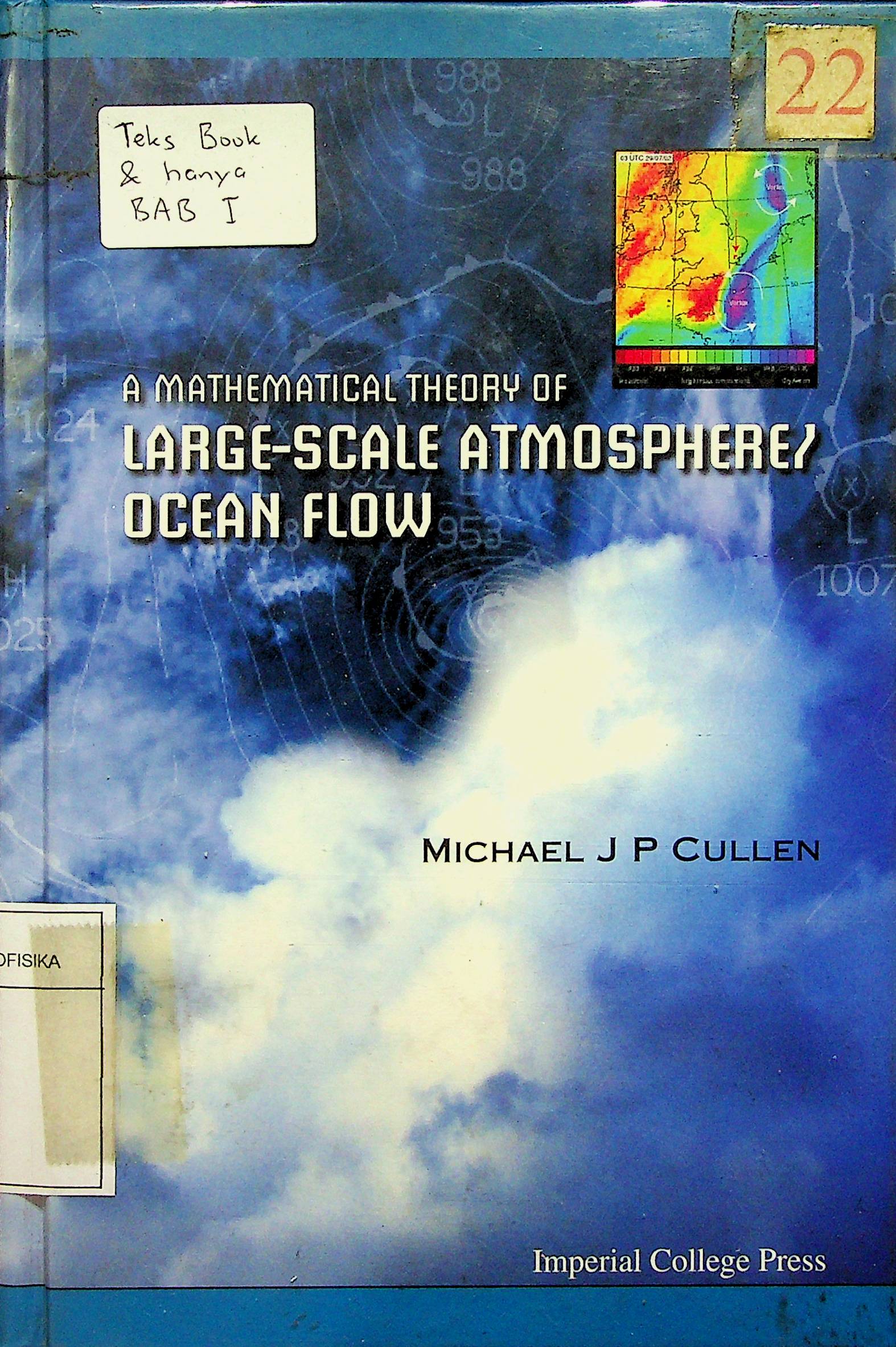Accurate extended-range weather predictions are now routinely available for up to a week ahead, and represent a major achievement of the meteorological community over the last 50 years. Underlying it is the highly predictable nature of large-scale atmospheric circulations. Realising it in practice has required a huge investment in computer technology and observing systems, such as satellites. Theoretical work over the last 30 years has emphasised reasons for unpredictability, in particular chaos theory, rather than reasons for predictability. This volume redresses this balance by discussing reasons for the high predictability. These are founded in dynamical meteorological theory developed over 50 years ago, but have been reinforced by exciting recent developments in understanding why some nonlinear systems are much more stable than might be expected. In this volume I first introduce the mathematical model to be used; then describe the mathematical properties of this model; and finally apply the mathematical results to the atmosphere and ocean and relate the predictions of the model to observed behaviour.Analysis of atmospheric or oceanic circulations directly from the governing equations of dynamics and thermodynamics is difficult because of the ‘scale problem’. Theoretical results on the Navier-Stokes equations, for example, concentrate on viscous scales, which are six orders of magnitude smaller than the smallest-scale weather systems. Dynamical meteorologists have addressed this over many years by developing a hierarchy of simplified equations, which represent the behaviour of the atmosphere (or ocean) in particular regimes. These are usually obtained by identifying small parameters) characteristic of the regime of interest, and deriving the simplified equations by asymptotic expansion in these parameter(s). Applying these equations to get rigorous mathematical results about the large scale haviour has only been widely attempted over the last 10 years. In order to obtain these results, the steps required are to prove that the simplified equations can be solved, and then to prove there is a solution of the complete equations ‘close’ to the that of the simplified equations in a suitable sense. The simplified solutions can then be analysed and predictions made about atmosphere/ocean behaviour; subject to the error estimate made above.This procedure is not yet widely followed because of the difficulty in obtaining existence proofs and a posteriori error estimates. More commonly, solutions of the simplified equations are obtained and used subject to the a priori error estimate obtained form the original asymptotic expansion.This volume is concerned with large-scale atmosphere/ocean flows. The traditional approximations used to describe such flows are based on smallness of the Rossby number, which states that large-scale flows are rotation- dominated, the Froude number, which states that the flow is strongly stratified, and the aspect ratio, which states that the atmosphere is much shallower than the horizontal scale of most weather systems. These lead to the geostrophic approximation, which relates the horizontal wind to the horizontal pressure gradient. The semi-geostrophic equations developed by Hoskins, following earlier work by Eliassen, give a set of simplified equations which is valid on large scales. Their asymptotic validity requires a Lagrangian form of the Rossby number to be small, which means that fluid trajectories cannot curve too sharply. This is appropriate for extra-tropical weather system, including fronts and jet streams which are characterised by a large length-scale in one direction. They are not appropriate for smaller- scale phenomena such as tropical cyclones, which are in a different asymptotic regime.The analysis of these equations uses results from the theory of the Monge-Kantorovich problem, which has a long history in optimisation theory. There is thus an exciting and fundamental link between the dynamics of atmosphere/ocean flows and many other fields of study, such as economics, probability theory, magnetohydrodynamics and kinetic theory. It also exploits a ‘convexity principle’ due to Cullen and Purser, which requires that simplified solutions describing large-scale phenomena must be stable to parcel displacements. The convexity property is the basis of proofs of existence of the solutions to the semi-geostrophic equations.The volume also discusses the application of the semi-geostrophic equations to real flows. An important feature is that the solutions can form fronts, where the solutions are discontinuous in physical space. The formation of fronts does not destroy the predictability of the flow. Cullen and
5
A MATHEMATICAL THEORY OF LARGE-SCALE ATMOSPHERE/ OCEAN FLOW
Michael j p Cullen
Penerbit :
Imperial College Press
Tahun :
2006
Buku Text
-
No Scan101
-
No Klasifikasi551.51
-
ISBN
-
ISSN
-
No Registrasi052A/VI11/2007
-
Lokasi Terbit
-
Jumlah Hal30
-
Label551.51 cul m
-
Versi DigitalTIDAK
-
Versi FisikTIDAK
-
Lokasi Rak Buku Fisik//
-
Jumlah Exemplar Fisik Tersedia-






